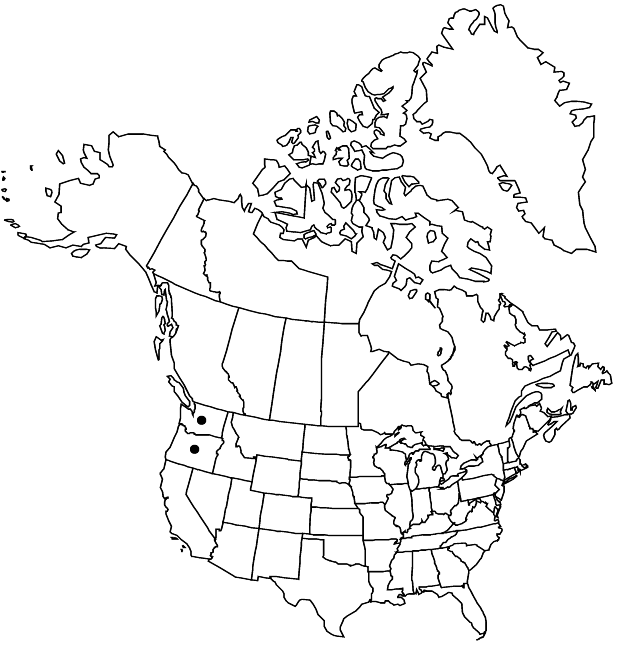Dodecatheon poeticum
Rhodora 32: 27. 1930 ,.
Plants 10–45 cm; scape glandular-pubescent. Caudices not obvious at anthesis; roots white; bulblets usually present. Leaves (3–)5–16(–20) × 0.5–2.5(–3) cm; petiole usually winged; blade oblanceolate to spatulate, base usually decurrent onto stem, gradually tapering to petiole, margins usually entire, sometimes denticulate to slightly toothed, surfaces glandular-pubescent. Inflorescences 2–10(–17)-flowered; bracts narrowly to broadly lanceolate, 2–10 mm, glandular-pubescent. Pedicels 1–3.5 cm, glandular-pubescent. Flowers: calyx greenish, often with pinkish purple to purple speckles, 5–9 mm, glabrous or slightly glandular at least along margins, tube 2–4(–5) mm, lobes 5, 3–5 mm; corolla tube maroon and yellow with reddish, thin, wavy ring, lobes 5, magenta to lavender, (8–)10–15(–18) mm; filaments connate, tube maroon, 1.5–3 × 2–3 mm; anthers 4–7 mm; pollen sacs maroon to black, connective deep purple to black, transversely rugose (sometimes seemingly smooth [when immature] or transversely wrinkled [when dried]); stigma not enlarged compared to style. Capsules tan, often faintly reddish apically, valvate, short-ovoid, 6–9 × 4–7 mm, glandular-pubescent; walls usually thick and firm. Seeds without membrane along edges. 2n = 44, 88.
Phenology: Flowering spring.
Habitat: Moist flats, slopes, and cliff faces in grassland communities and in oak and conifer woodlands
Elevation: 50-900 m
Distribution

Oreg., Wash.
Discussion
Dodecatheon poeticum grows mainly in the Columbia River gorge and on the eastern edge of the Cascade Range in Washington, and in Oregon. Nearby one can find D. conjugens var. conjugens and D. pulchellum var. cusickii, features of which (the rugose connective of the former, the glandular condition of the latter) are combined in D. poeticum. The distinct filaments of var. conjugens readily distinguish that taxon from D. poeticum; distinction between D. poeticum and D. pulchellum var. cusickii is difficult. The former has maroon pollen sacs; var. cusickii has yellow ones. Plants with all of the features of D. poeticum rarely have the smooth connective typical of D. pulchellum. H. J. Thompson (1953) suggested that D. poeticum (a tetraploid) might be the product of an allopolyploid involving var. cusickii and D. hendersonii (both diploids).
The leaves of Dodecatheon poeticum are occasionally slightly toothed and relatively broad (e.g., K. L. Chambers 2080, OSC) and resemble the leaves of D. dentatum, a species that flowers in the Gorge typically after D. poeticum. Rootstocks with bulblets are rarely seen on herbarium specimens.
Selected References
None.